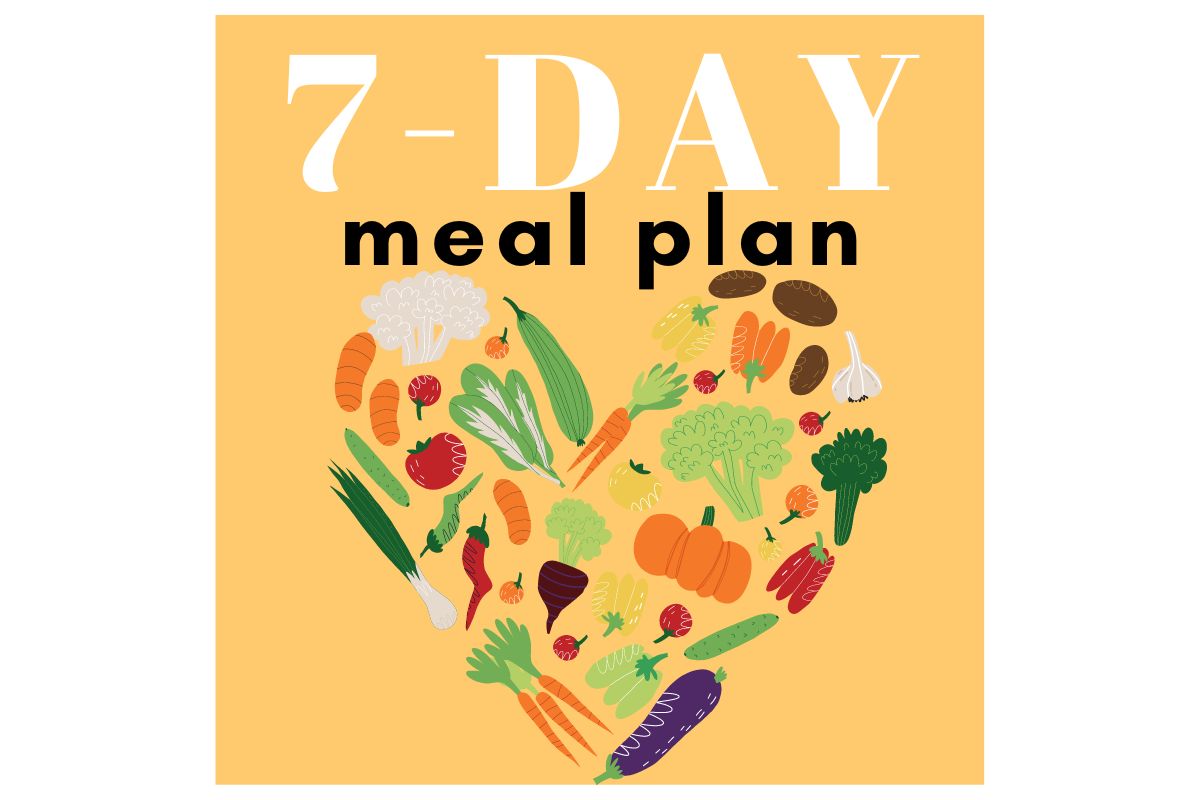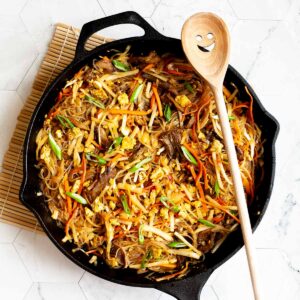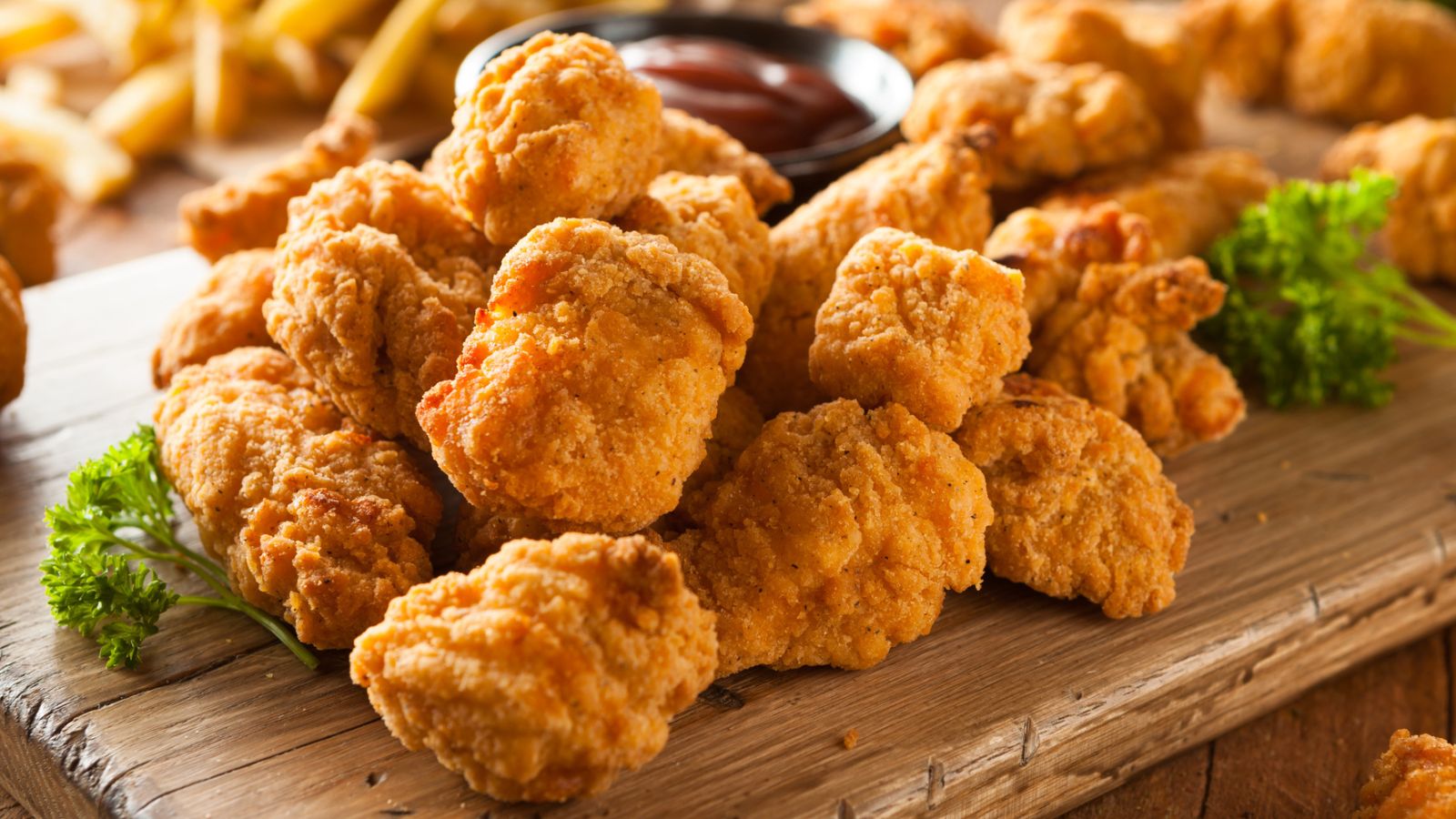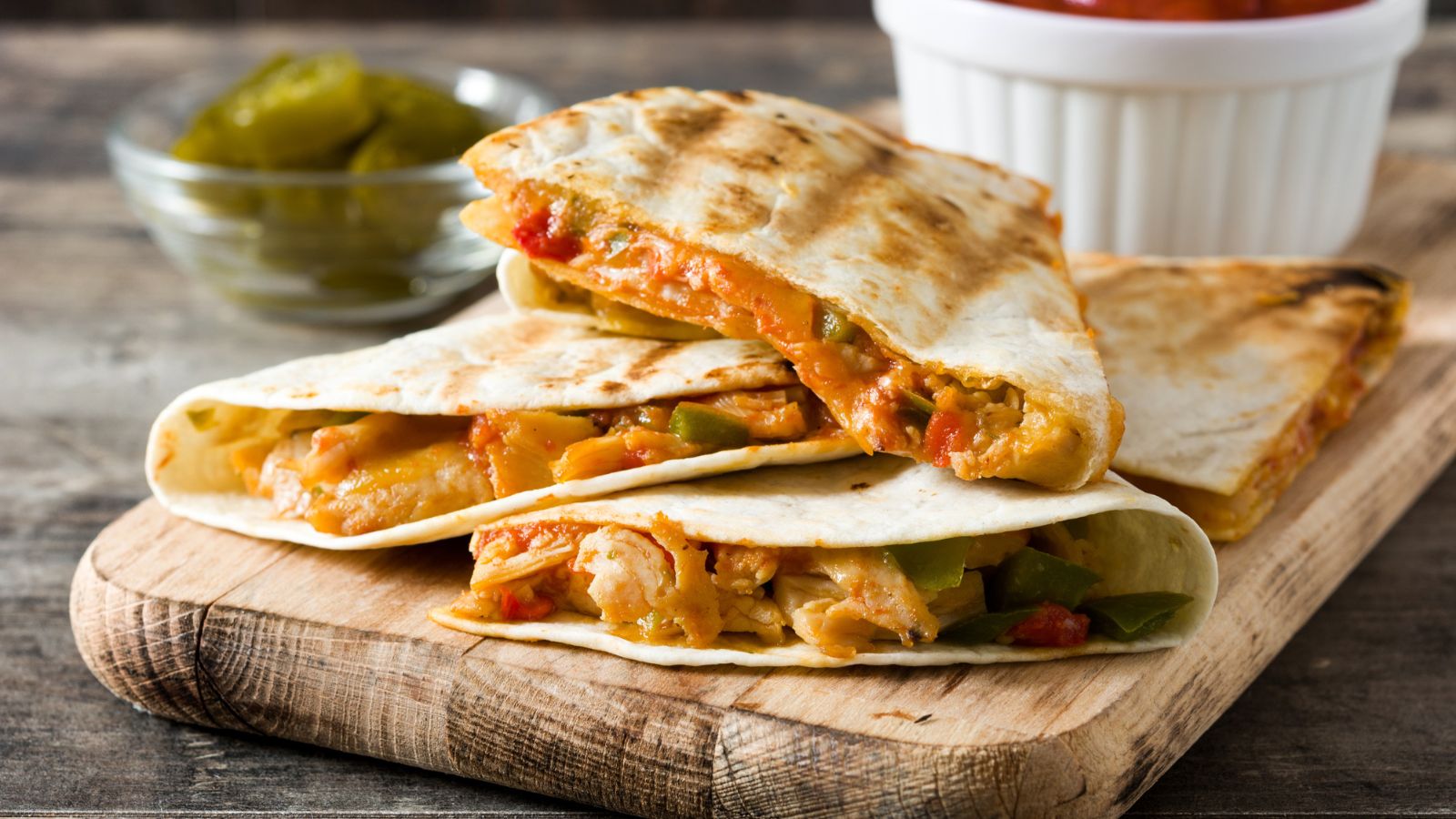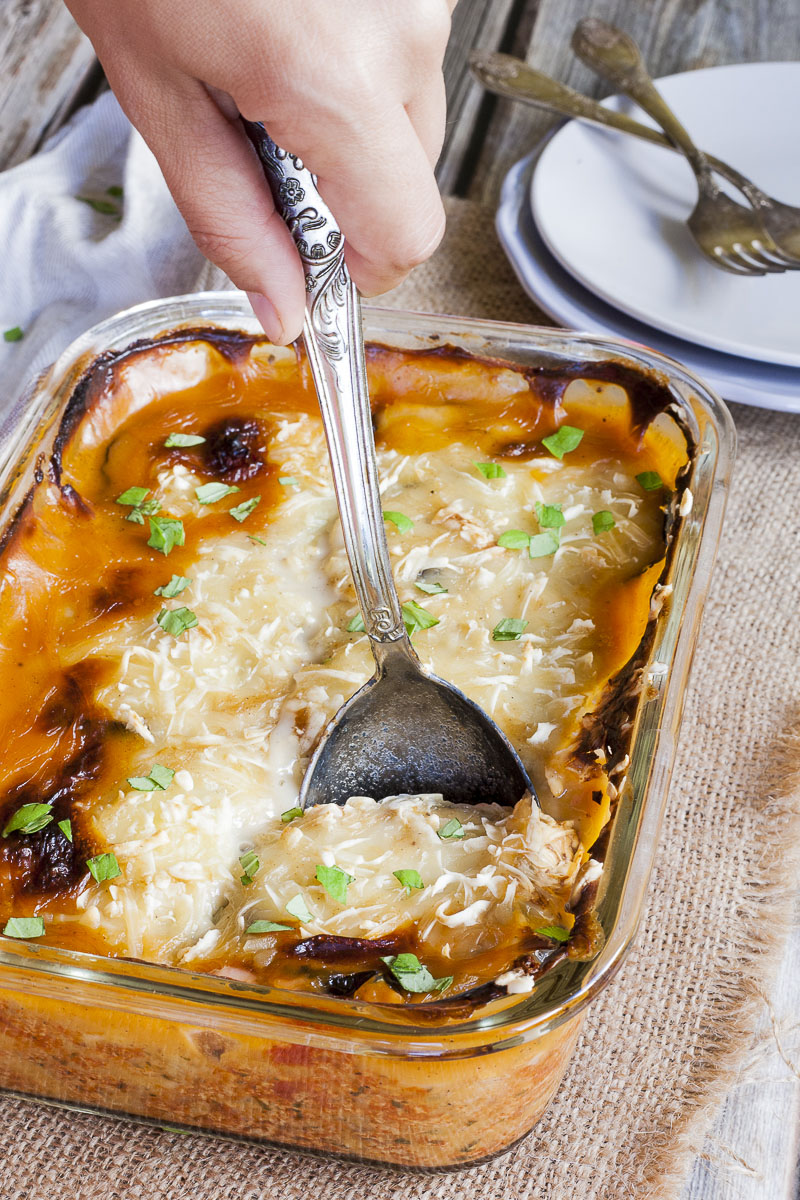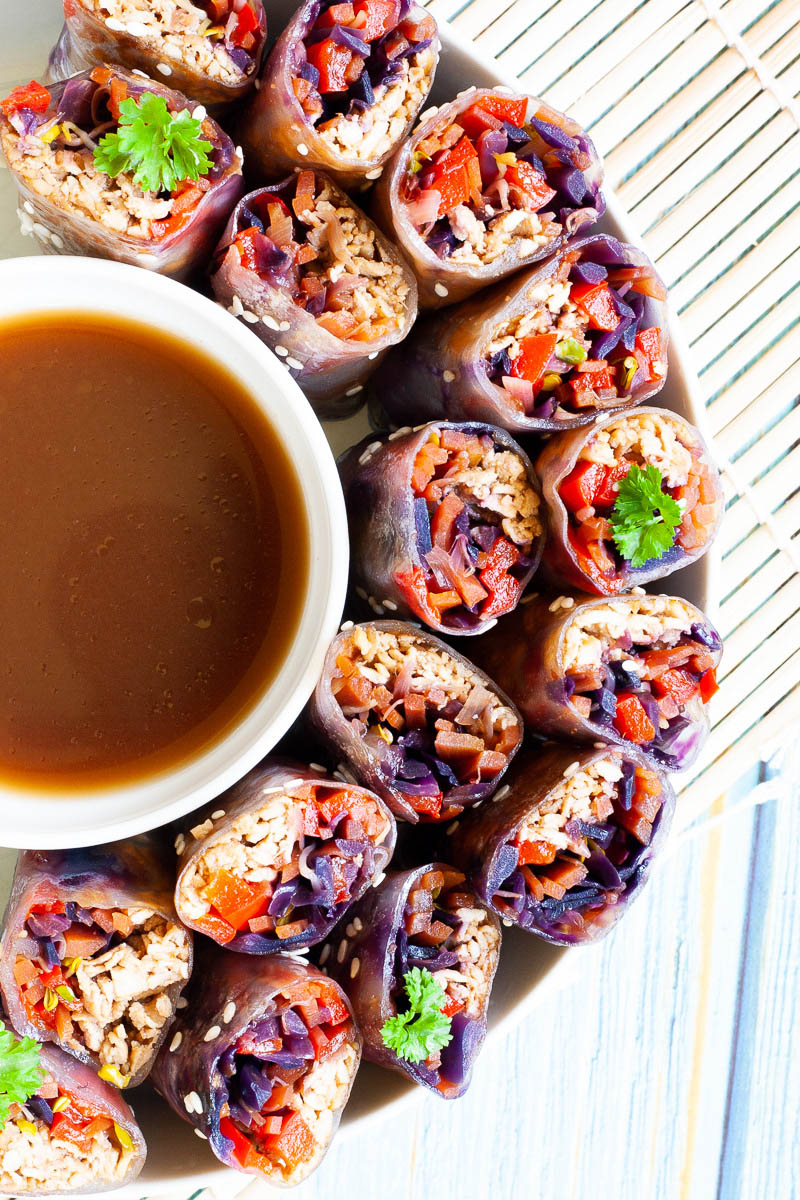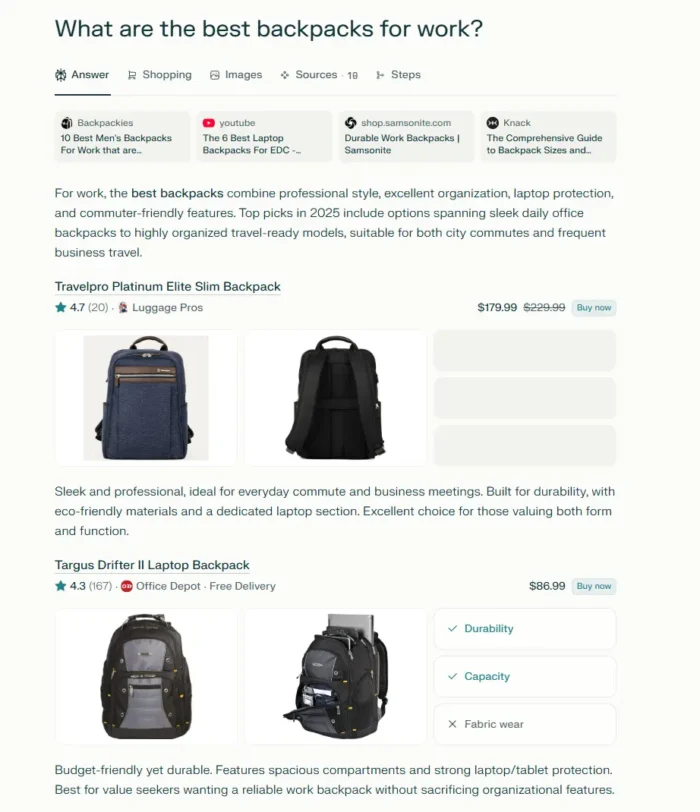Pad Woon Sen (Thai Glass Noodles Stir Fry)
This pad woon sen is a vegan take on the classic Thai glass noodle stir fry dish. It features all the classic flavors of pad woon sen, from the sweet and salty sauce to the variety of vegetables included....
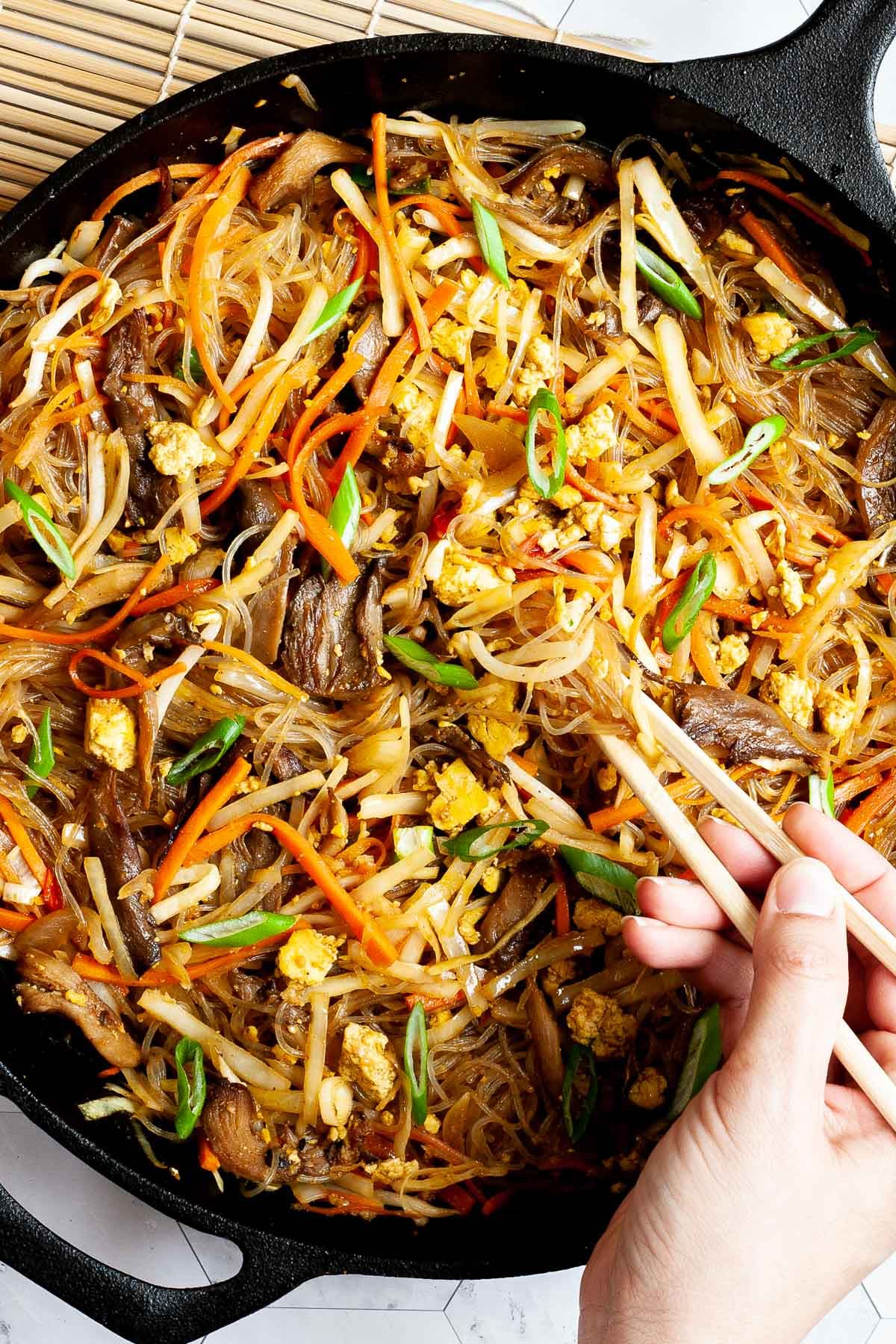
By Nandor Barta on 06/28/2024 - May contain affiliate links. Please read our disclosure.
This pad woon sen is a vegan take on the classic Thai glass noodle stir fry dish. It features all the classic flavors of pad woon sen, from the sweet and salty sauce to the variety of vegetables included.
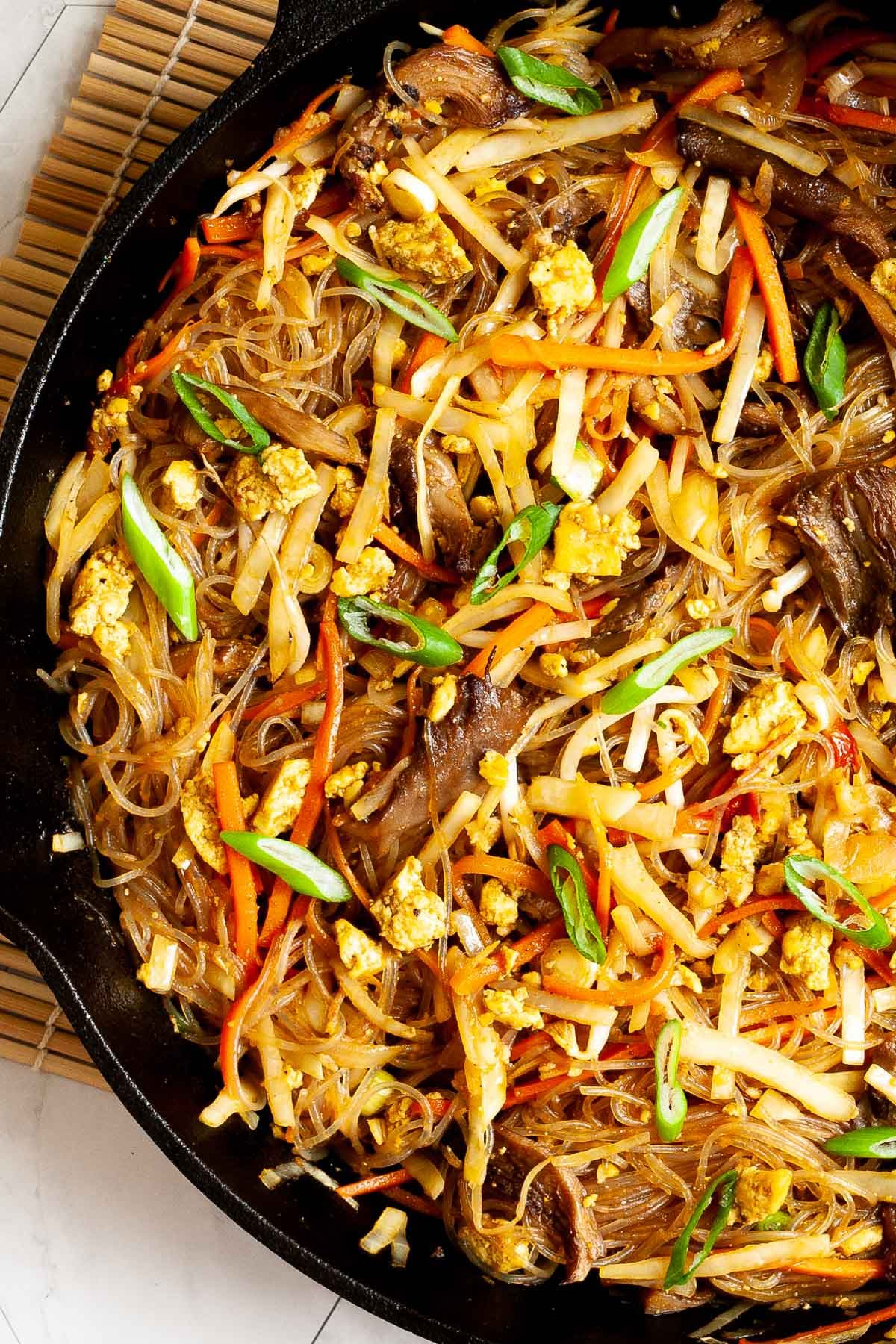
Want to save this post?
Enter your email below and get it sent straight to your inbox. Plus, I’ll send you budget recipes and money-saving tips every week!
It is not always easy to find meatless versions of classic dishes. This pad woon sen recipe is a favorite of mine as it is packed with flavor and is also very versatile. You can use any vegetables you have on hand and it will still turn out delicious.
If you like Thai recipes, you should check out my vegan yum woon sen, oyster mushroom noodle stir fry, or Thai red curry with tofu.
Jump to:❤️ Why you’ll love it🧾 Key ingredients🥘 Equipment👩🍳 Instructions💡 Expert tip🔄 Variations🥣 Serving ideas❄️ Storing tips🤔 FAQsMore vegan Asian recipesPad Woon Sen {Vegan} (Thai Glass Noodle Stir Fry)❤️ Why you’ll love it
I absolutely love how this pad woon sen recipe is a delicious and popular quick stir-fried dish. It is not only sweet and salty but also has a rich and aromatic sauce that is simply irresistible.
The best part is that it is loaded with shredded vegetables like carrots, cabbage, oyster mushrooms, mung bean sprouts, and tofu scramble, making it a complete and satisfying meal in one.
The use of glass noodles in this recipe is a great twist. These noodles, also known as cellophane noodles, are made from mung beans and have a wonderful, slightly chewy texture that is different from your typical wheat noodles.
Plus, the marinated oyster mushrooms add a meaty and rich, umami flavor that takes it to the next level.

🧾 Key ingredients
This vegan pad woon sen is a beautiful medley of fresh, vibrant ingredients that come together to deliver a delicious, satisfying dish
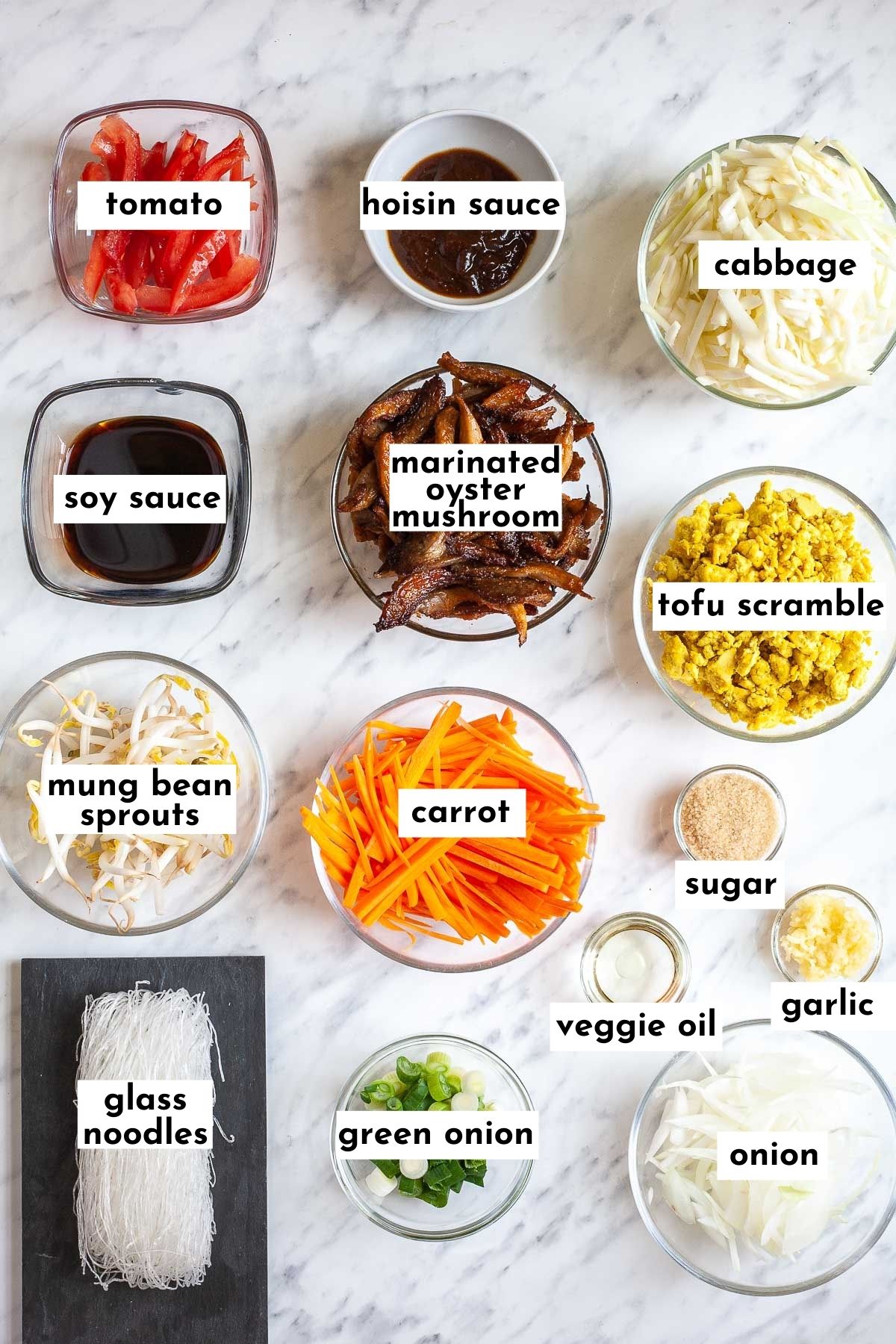
Glass noodles are the star of this dish. They are transparent, thin noodles made from mung bean starch and are the perfect vehicle for the delicious sauce and the crisp, colorful vegetables. Look for them in the Asian food section of your grocery store.
Oyster mushrooms are a key ingredient in this recipe. They have a delicate, oyster-like flavor and a velvety texture that absorbs the flavors of the dish beautifully.
Vegetables like carrots, cabbage, and tomatoes add a wonderful crunch and a burst of color to the dish. They are not only delicious but also make the dish a feast for the eyes.
Green onions and garlic are the aromatic stars of this dish. They add a depth of flavor and a wonderful fragrance that permeates the dish.
Bean sprouts are a traditional ingredient in pad woon sen. They add a refreshing crunch that balances the other ingredients.
🛒 You can find detailed measurements for all ingredients in the printable version of the recipe card at the bottom of this post.
🥘 Equipment
For this pad woon sen recipe, a good quality wok is an essential piece of equipment. Its wide base and high, sloping sides provide ample space for stir-frying all the ingredients evenly without overcrowding the pan. I highly recommend using a wok to achieve the authentic, delicious flavor and texture of this Thai glass noodle stir-fry.

👩🍳 Instructions
Preparing the ingredients
STEP 1
Start by preparing your vegetables. Peel and slice the onion, then peel and mince the garlic. Remember not to use a grater, as the garlic will burn easily. Wash and slice the green onion, and discard the outer leaves of the cabbage. Cut the head into quarters, and then cut one-quarter into thin slices.
STEP 2
Next, prepare the carrots. Wash, peel, and cut them into thin matchsticks. For a visual guide, you can refer to our sautéeed julienne carrots recipe. Wash and slice the tomato, and discard the seeds.
STEP 3
Now, it’s time to prepare the glass noodles. Cook or soak them according to the package instructions, and then drain the water when they are ready. For a visual guide, you can refer to my vegan coleslaw recipe.
Making the pad woon sen
STEP 1
Prepare the oyster mushrooms by cutting the stem and tearing the cap into small shreds with your hands. If the stem is soft enough, you can also shred them.
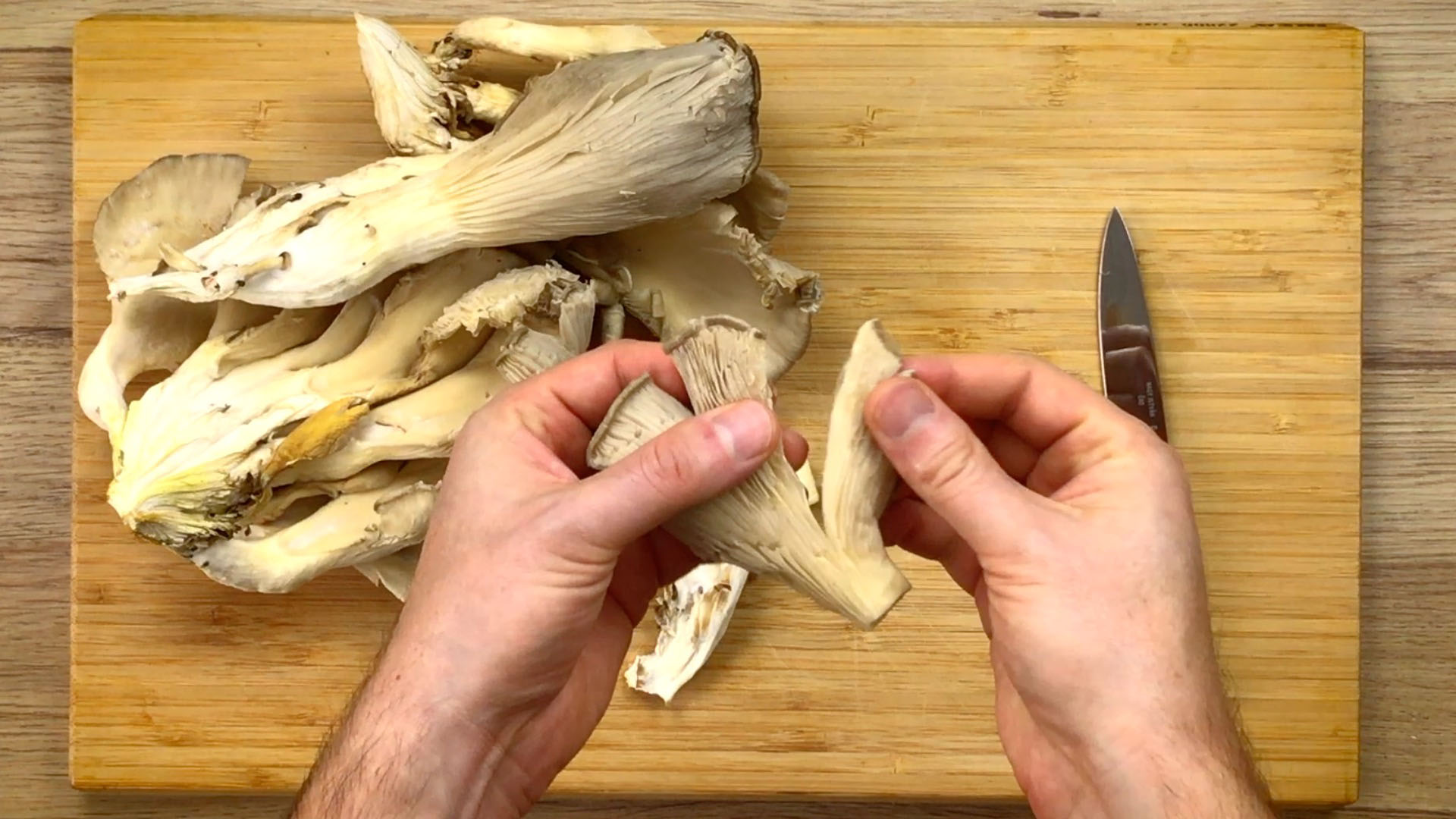
STEP 2
In a small bowl, mix the marinade for the mushrooms. This includes soy sauce (or tamari), onion powder, garlic powder, black pepper, vegetable oil, balsamic vinegar, sweet smoked paprika powder, salt, and Worcestershire sauce.
STEP 3
Cover the mushroom shreds with the marinade in a large bowl. You can then choose to bake them in the oven at 425 degrees Fahrenheit for 20 minutes, or pan-fry them until they turn crispy.
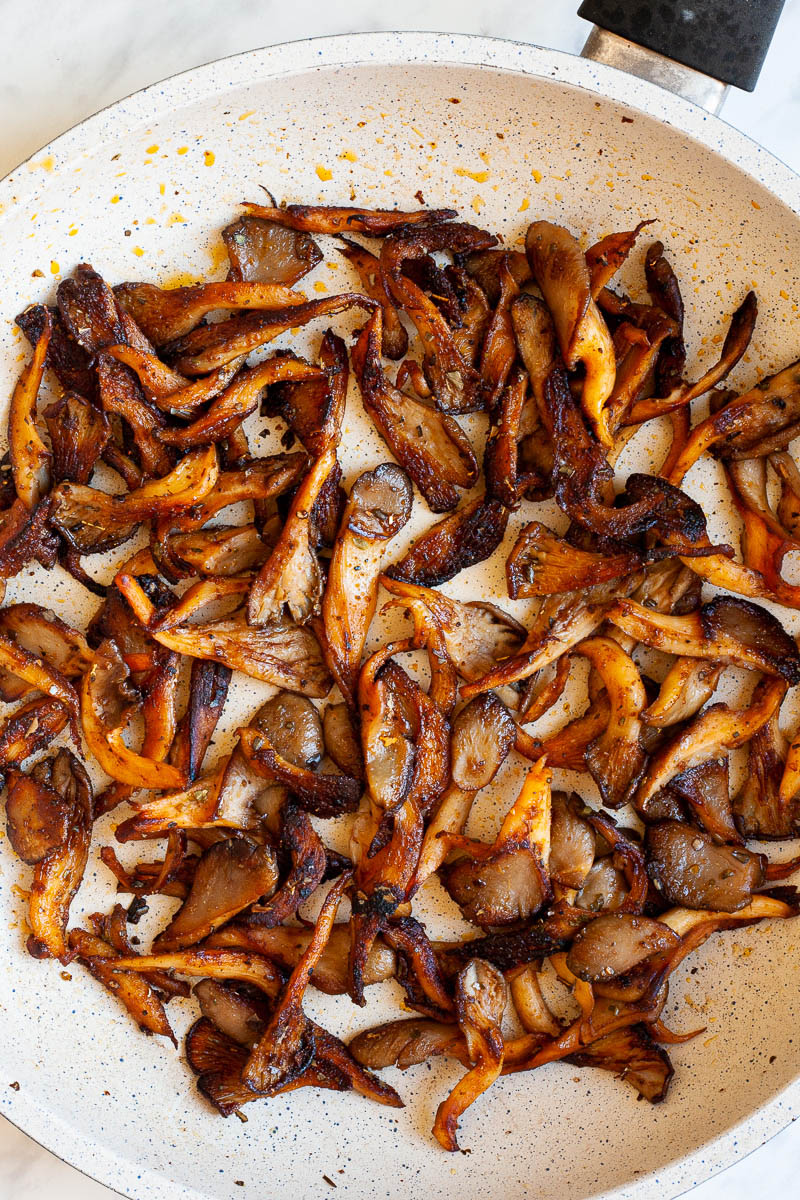 Fried
Fried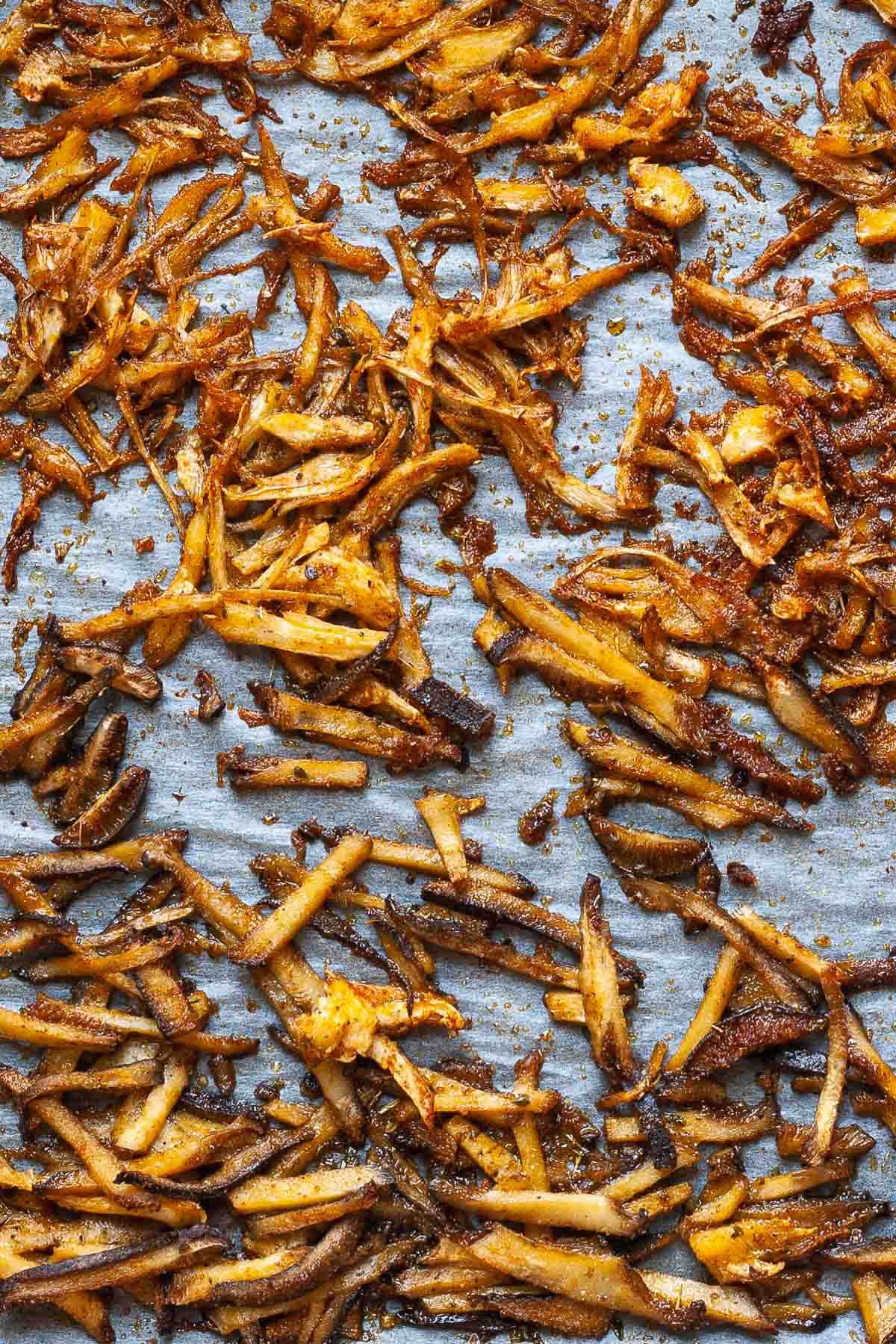 Baked
BakedSTEP 4
Heat a wok, a frying pan, or a cast-iron skillet over medium-high heat. Add vegetable oil and minced garlic, and stir and fry them for a minute. Be careful not to let them burn.
STEP 5
Add the sliced onion, cabbage, tomatoes and carrots, and fry them for approximately 6-7 minutes. They should remain crunchy, so be careful not to overcook them.
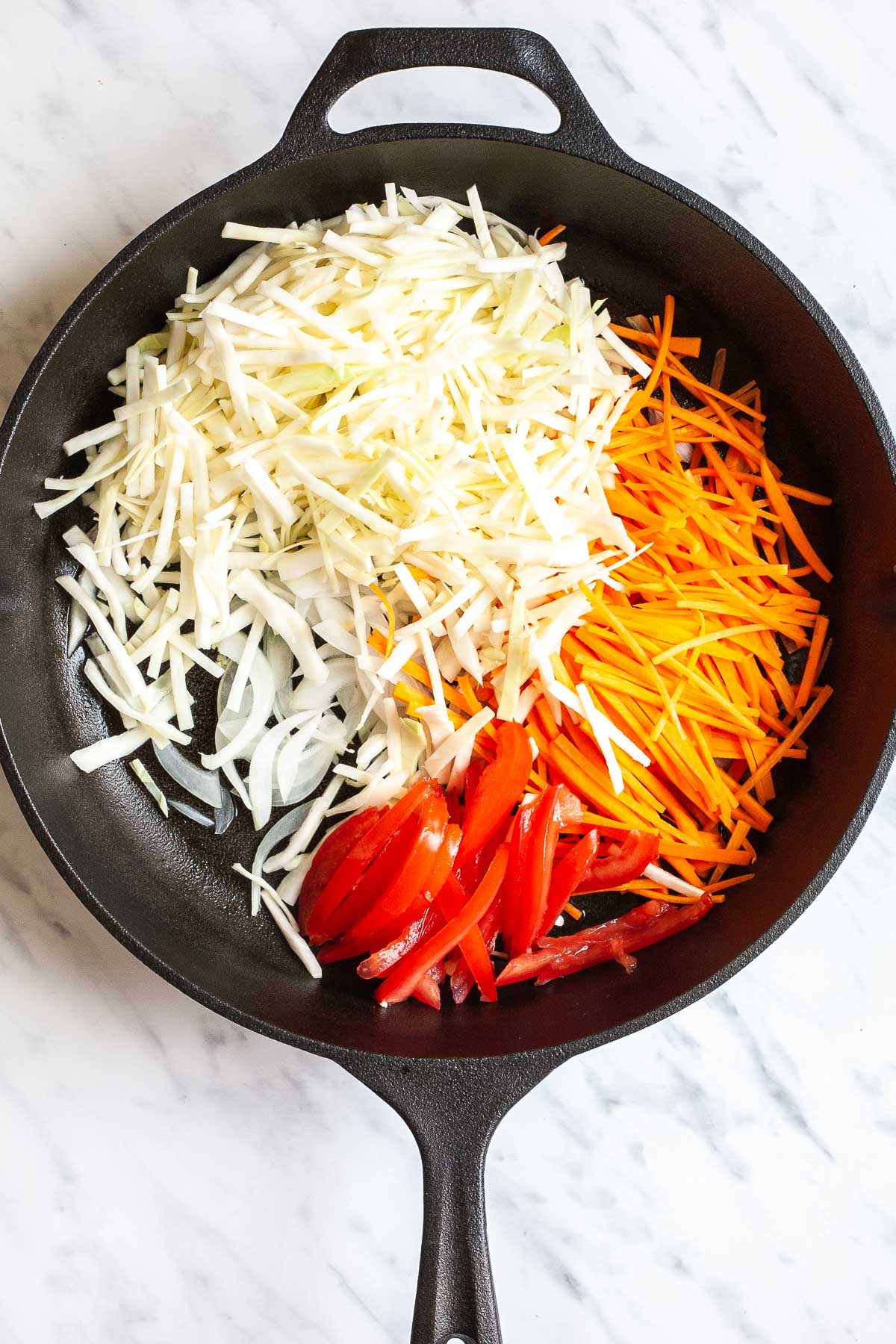
STEP 6
Add the baked or pan-fried mushrooms, and the pre-cooked tofu scramble. Stir and fry for 1-2 minutes to reheat all the ingredients and mix them well with the vegetables.
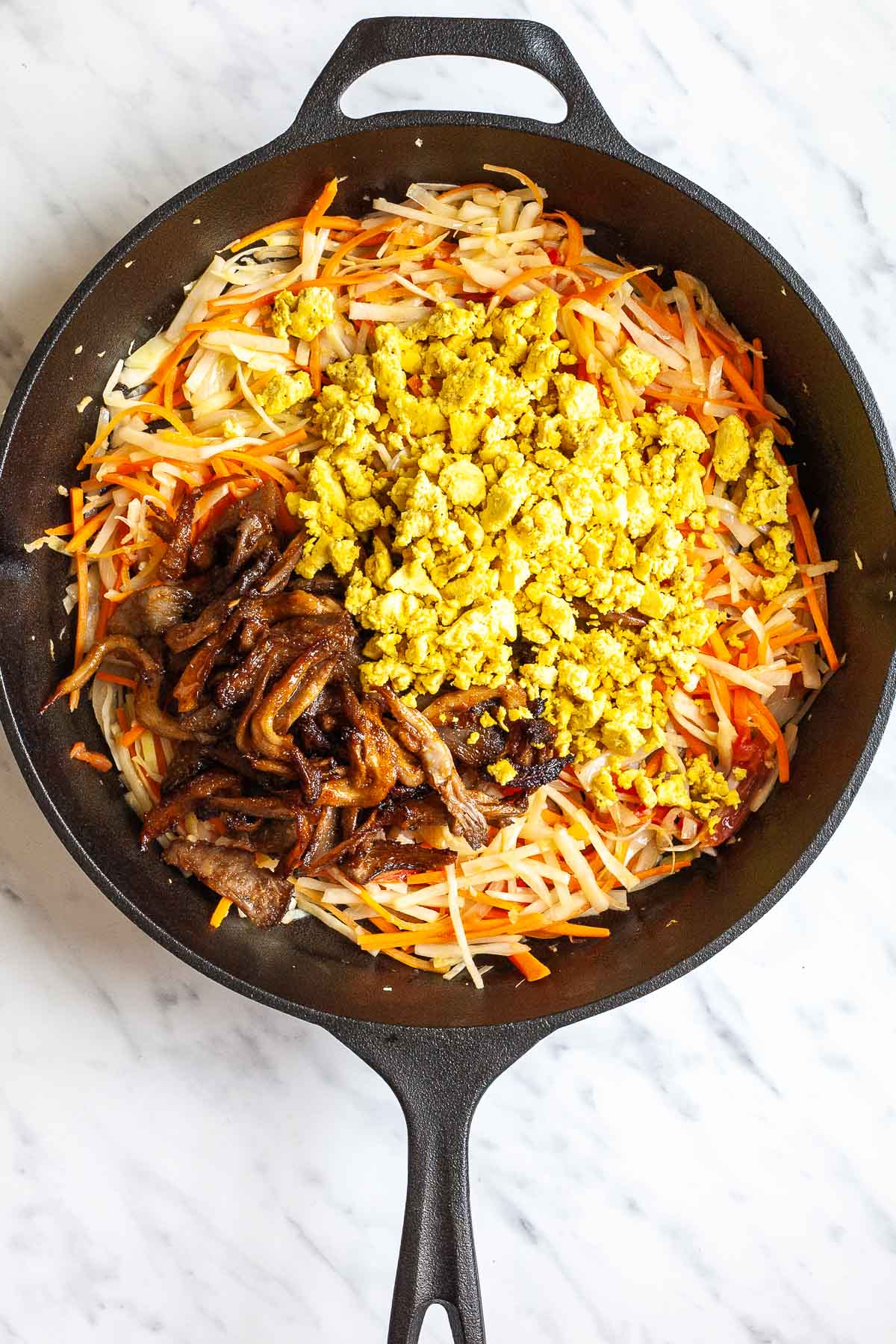
STEP 7
Add the pre-cooked noodles, hoisin sauce, soy sauce (or tamari), and sugar. Stir and fry for another 1-2 minutes.
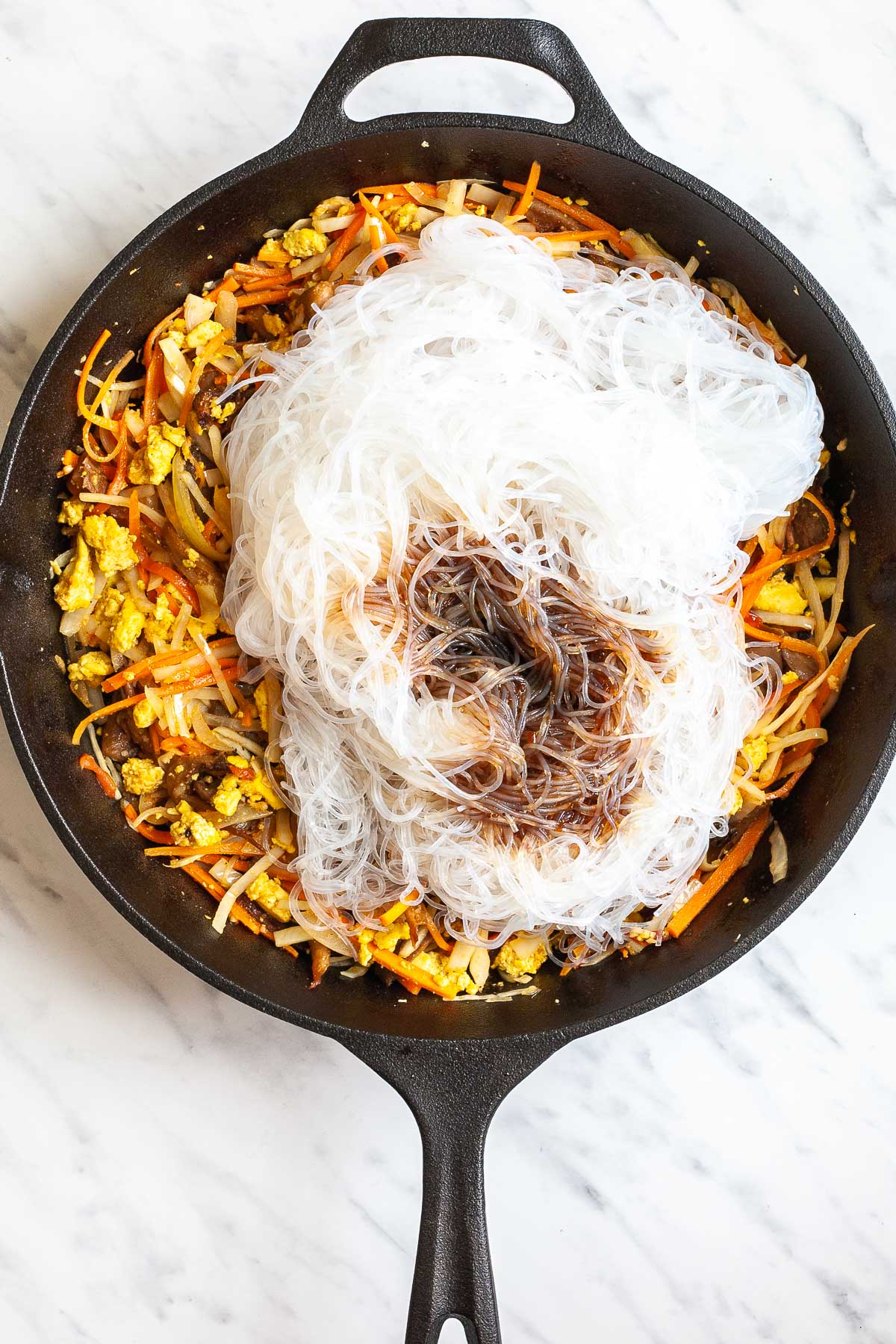
STEP 8
Finally, add the sprouts and green onion. Stir well, and your pad woon sen is ready to serve.
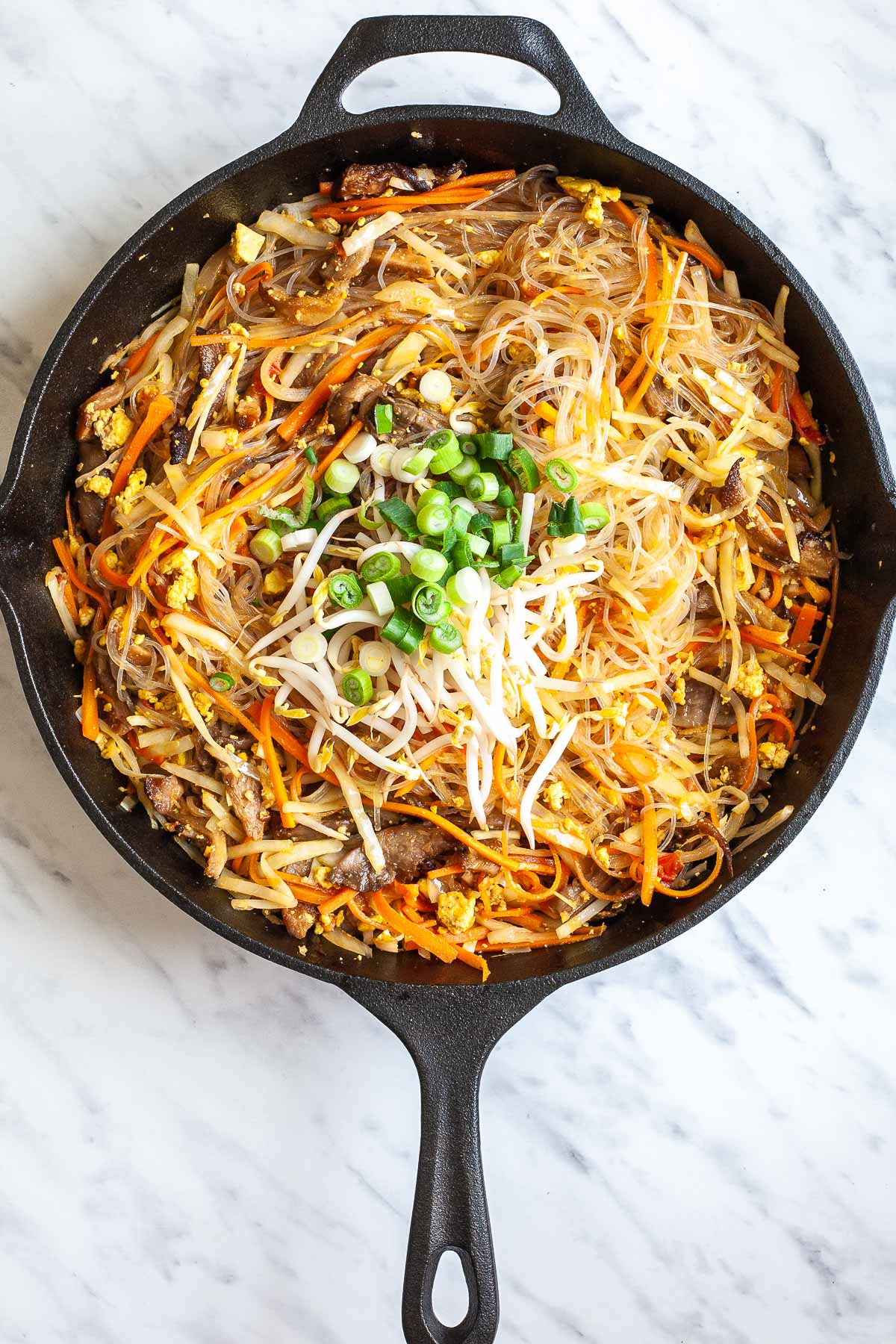
💡 Expert tip
The key to this pad woon sen recipe is to not overcook the vegetables. Stir-fry the cabbage, carrots, and other vegetables for just 6-7 minutes, leaving them slightly crunchy. This not only retains their nutritional value but also adds a pleasant texture to the dish.
🔄 Variations
If you are a fan of spicy food, consider adding a chopped chili or a teaspoon of chili flakes to the dish. This will give your pad woon sen a fiery kick and take the flavor profile to a whole new level.
For a more refreshing twist, try adding a handful of fresh herbs such as cilantro, mint, or Thai basil at the end of cooking. These herbs will not only add a pop of color but also a refreshing and aromatic flavor that complements the other ingredients beautifully.
If you are looking for a protein-packed version of this dish, consider adding edamame or chickpeas. These legumes are not only high in protein and fiber but also add a unique texture to the stir-fry.
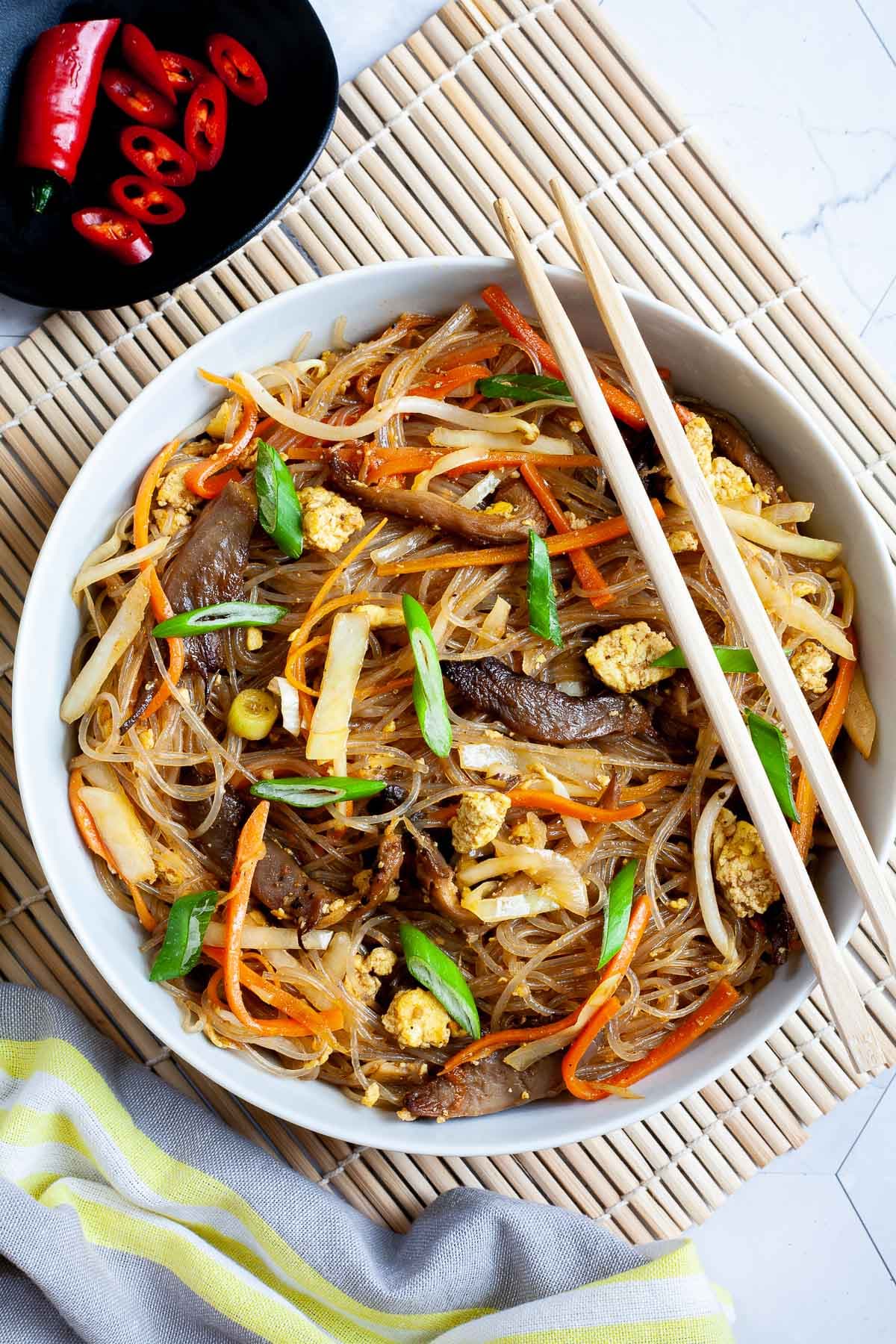
🥣 Serving ideas
Pad woon sen is a versatile dish that can be enjoyed in various ways. It is a perfect main course for a family dinner. I like to serve it with a side of fresh vegetable spring rolls for a complete and satisfying meal.
It is also a great option for a vegan lunch. I often pack it in a bento box with some fruit and a small salad for a healthy and delicious midday meal.
If you are hosting a dinner party, consider serving pad woon sen as an appetizer. It pairs beautifully with other Thai dishes such as green curry or tom yum. You can also serve it with a selection of vegan dumplings for a fun and flavorful start to the meal.
For a refreshing and light option, serve it with a side of cucumber salad or Thai papaya salad. The tangy and spicy flavors of the salad complement the rich and savory pad woon sen, making for a perfect balance of flavors.
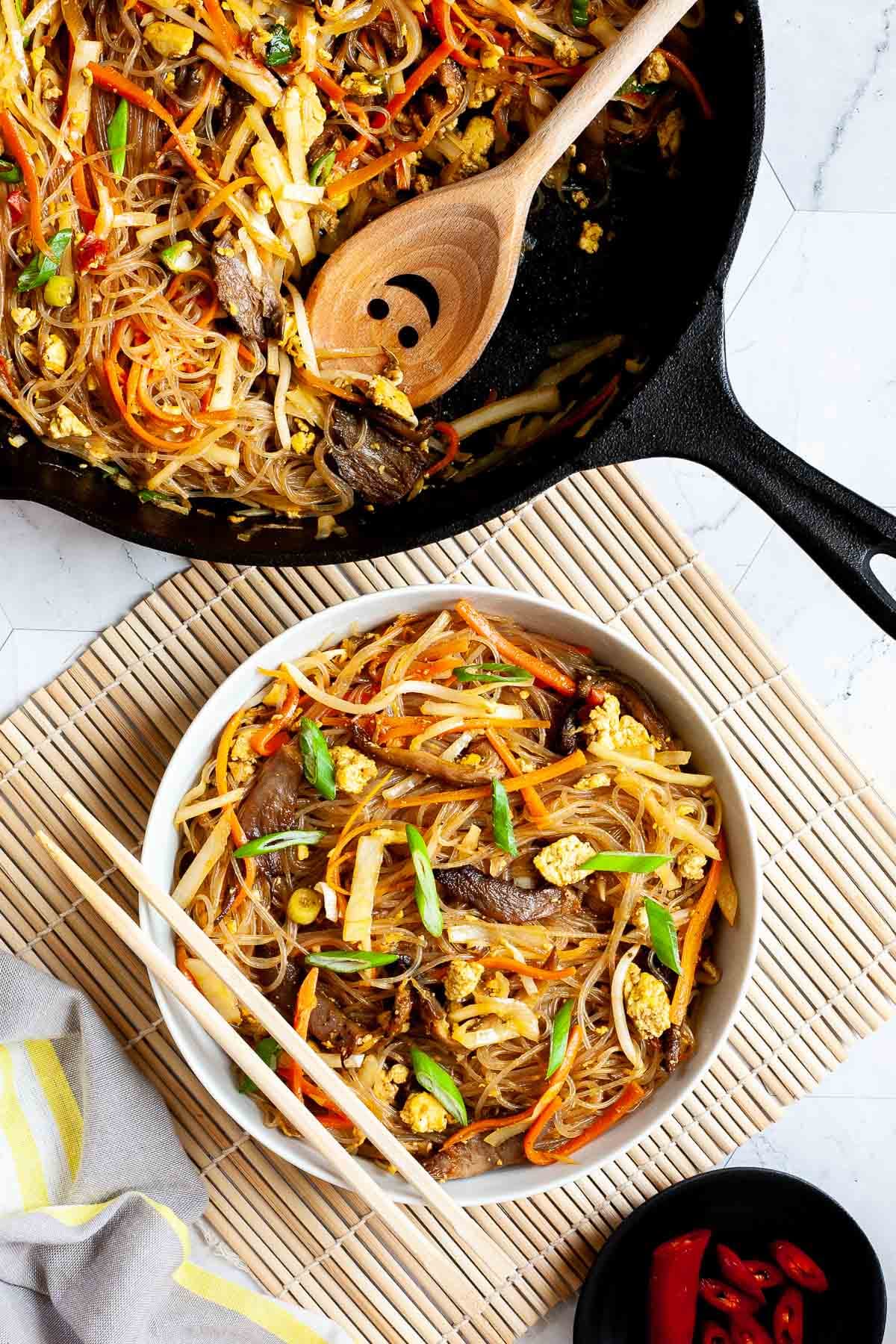
❄️ Storing tips
This pad woon sen recipe is a great option for meal prep, and the leftovers store well, whether in the fridge or the freezer.
To store the leftovers, allow the dish to cool completely. Once cooled, transfer it to an airtight container. It will stay fresh in the refrigerator for about 3 to 4 days.
I do not recommend freezing this dish. The glass noodles can become mushy and the vegetables can lose their crispness upon thaw. It is best to enjoy this dish fresh or store it in the refrigerator for a few days.
To reheat, simply place the desired portion in a pan and warm it over medium heat, stirring occasionally, until it is heated through. If the dish seems a bit dry, you can add a splash of water or vegetable broth to moisten it.
🤔 FAQs
What is the difference between Pad Woon Sen, Pad Thai, and Pad See Ew?
The main difference between these dishes is the type of noodles used. Pad Woon Sen is made with mung bean noodles (also known as vermicelli or cellophane noodles), Pad Thai is made with flat rice noodles, and Pad See Ew is made with broad rice noodles.
What can I use as a substitute for oyster mushrooms?
If you do not have oyster mushrooms, you can use shiitake or maitake mushrooms as a close substitute. These mushrooms have a similar texture and will work well in this pad woon sen recipe.
THANK YOU so much for visiting our website. Please comment below if you have tried this recipe. We LOVE hearing from you! If you loved the recipe, please don’t forget to give us a ⭐⭐⭐⭐⭐ RATING. We appreciate all of our readers.
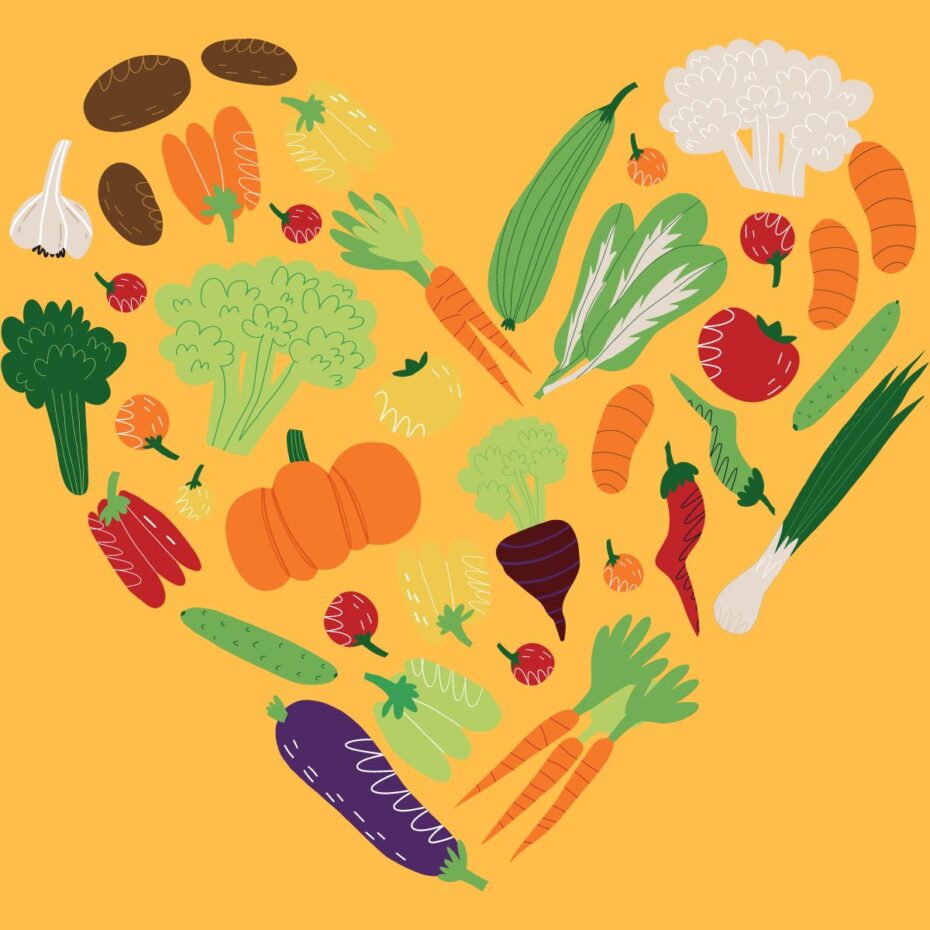
Pad Woon Sen {Vegan} (Thai Glass Noodle Stir Fry)
This pad woon sen is a vegan take on the classic Thai glass noodle stir fry dish. It features all the classic flavors of pad woon sen, from the sweet and salty sauce to the variety of vegetables included.
Prep Time 15 minutes
Cook Time 15 minutes
Baking time 20 minutes
Total Time 50 minutes
Course Main Course
Servings 4 servings
Calories 272kcal
EXCLUSIVE 5-ingredient recipes for busy home cooks that are ready in 15 minutes!Check out our Express Vegan Cookbook!
Instructions
Preparing the ingredients
Peel and slice the onion.
Peel and mince garlic. Don’t use a grater as it will burn easily.
Wash and slice green onion.
Discard the outer leaves of the cabbage and cut the head into quarters. Cut one-quarter into thin slices. Check out our vegan coleslaw recipe if you need step photos of how to do it.
Wash, peel, and cut carrots into thin matchsticks. If you need step photos of how to do it, check out our sauteed julienne carrots recipe.
Wash and slice the tomato. Discard the seeds.
Cook or soak glass noodles according to package instructions. Drain water when they are ready.
Prepare tofu scramble or another vegan egg substitute separately.
Preparing the marinated mushrooms
Cut the stem of the oyster mushrooms and tear the cap into small shreds with our hands. If the stem is soft enough you can shred them as well.
Mix the marinade by adding these ingredients in a small bowl: soy sauce (or tamari), onion powder, garlic powder, black pepper, vegetable oil, balsamic vinegar, sweet smoked paprika powder, salt, and Worcestershire sauce.
Take a large bowl and cover the mushroom shreds with the marinade.
You can either bake them in the oven at 425 Fahrenheit (220 degrees Celsius) for 20 minutes or pan-fry them until they turn crispy.
Let’s make Thai glass noodle stir fry!
Take a wok, a frying pan, or a cast-iron skillet and heat it over medium-high heat.
Add vegetable oil and minced garlic. Stir and fry them for a minute. Make sure not too long as they can get easily burnt, especially if you minced them too finely.
Add sliced onion, cabbage, and carrots. Fry them for approx. 6-7 minutes. Do not over-cook them, it is better if they remain crunchy.
Add baked/pan-fried mushrooms and precooked tofu scramble. Stir and fry for 1-2 minutes. This is just to reheat all ingredients and mix them well with the vegetables.
Add precooked noodles, hoisin sauce, soy sauce (or tamari), and sugar. Stir and fry for another 1-2 minutes.
Finally, add sprouts and green onion. Stir well.
Nutrition
Nutrition Facts
Pad Woon Sen {Vegan} (Thai Glass Noodle Stir Fry)
Amount Per Serving (1 serving without tofu scramble)
Calories 272 Calories from Fat 9
% Daily Value*
Fat 1g2%
Saturated Fat 1g6%
Polyunsaturated Fat 1g
Monounsaturated Fat 1g
Cholesterol 1mg0%
Sodium 1936mg84%
Potassium 685mg20%
Carbohydrates 61g20%
Fiber 6g25%
Sugar 13g14%
Protein 7g14%
Vitamin A 5580IU112%
Vitamin C 25mg30%
Calcium 64mg6%
Iron 3mg17%
* Percent Daily Values are based on a 2000 calorie diet.
Reader Interactions
This site uses Akismet to reduce spam. Learn how your comment data is processed.

 Fransebas
Fransebas 